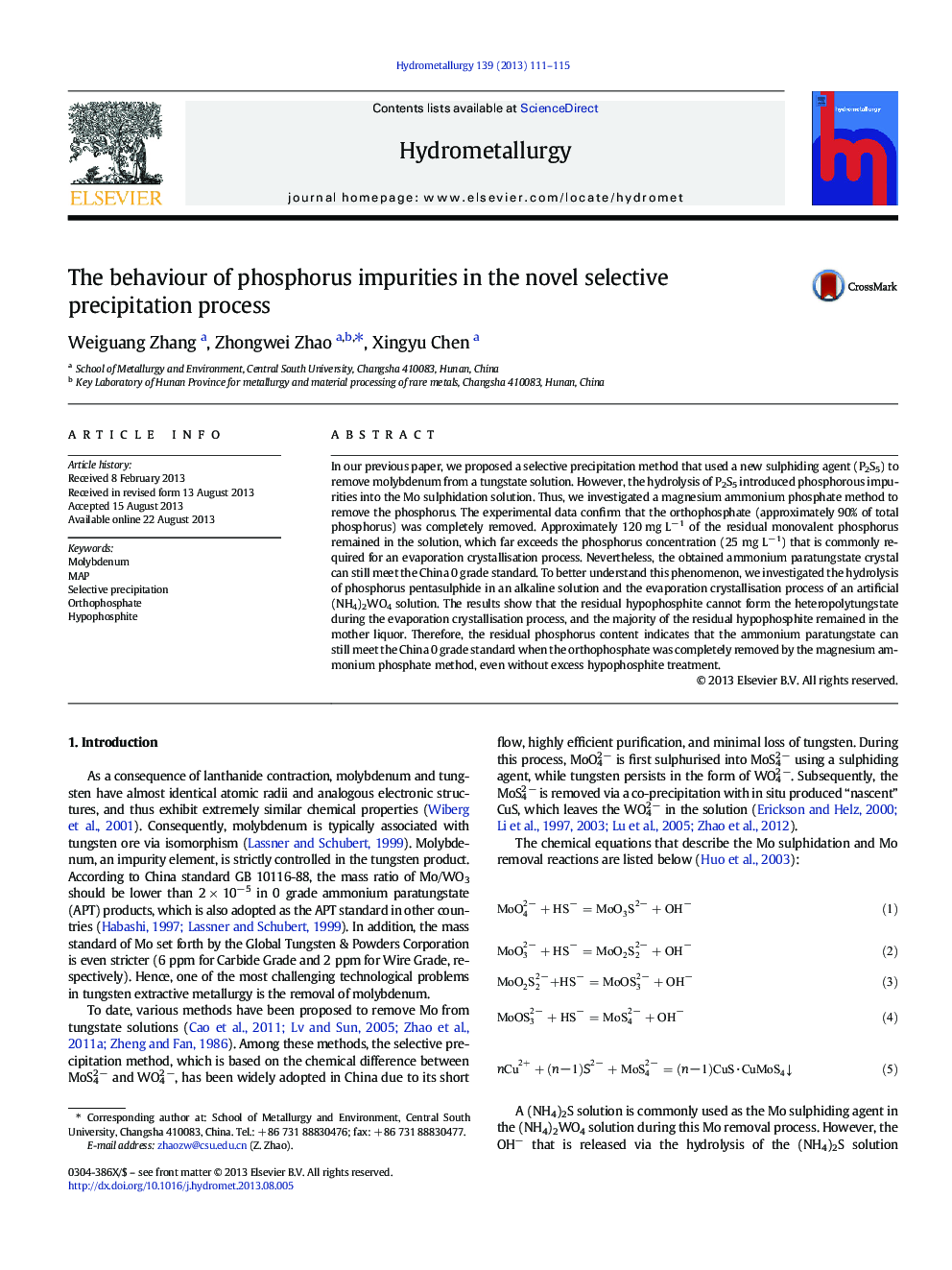| Article ID | Journal | Published Year | Pages | File Type |
|---|---|---|---|---|
| 212346 | Hydrometallurgy | 2013 | 5 Pages |
•The use of P2S5 inevitably introduces impurity P into the Mo-sulphidation solution.•Orthophosphate (90% of total P) can be completely removed by forming MgNH4PO4.•Residual hypophosphite can't be precipitated with Mg2+ and remains in the solution.•Hypophosphite cannot form the heteropolytungstate in the evaporation crystallisation.•0 grade ammonium paratungstate can still be obtained despite CP+ far above 25mg·L-1
In our previous paper, we proposed a selective precipitation method that used a new sulphiding agent (P2S5) to remove molybdenum from a tungstate solution. However, the hydrolysis of P2S5 introduced phosphorous impurities into the Mo sulphidation solution. Thus, we investigated a magnesium ammonium phosphate method to remove the phosphorus. The experimental data confirm that the orthophosphate (approximately 90% of total phosphorus) was completely removed. Approximately 120 mg L− 1 of the residual monovalent phosphorus remained in the solution, which far exceeds the phosphorus concentration (25 mg L− 1) that is commonly required for an evaporation crystallisation process. Nevertheless, the obtained ammonium paratungstate crystal can still meet the China 0 grade standard. To better understand this phenomenon, we investigated the hydrolysis of phosphorus pentasulphide in an alkaline solution and the evaporation crystallisation process of an artificial (NH4)2WO4 solution. The results show that the residual hypophosphite cannot form the heteropolytungstate during the evaporation crystallisation process, and the majority of the residual hypophosphite remained in the mother liquor. Therefore, the residual phosphorus content indicates that the ammonium paratungstate can still meet the China 0 grade standard when the orthophosphate was completely removed by the magnesium ammonium phosphate method, even without excess hypophosphite treatment.
